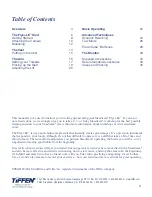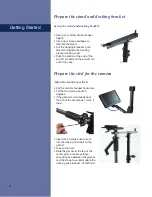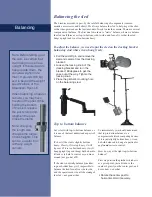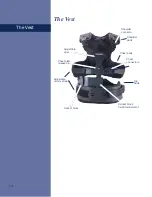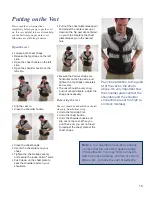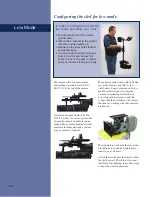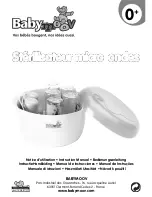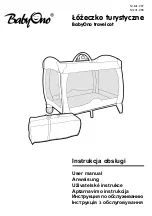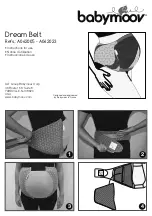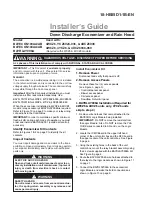
12
Balancing
Balancing the sled
The Steadicam works, in part, by the careful balancing of components (camera,
monitor, accessories, and battery). We always balance the sled to help us get the shot,
so that the operator does the least amount of work to aim the camera. There are several
components of balance. The first one to work on is “static” balance, where we balance
the sled in all three axes (top-to-bottom, side-to-side, and fore-aft), so that the sled
hangs upright and is not too bottom heavy.
To adjust the balance, we need to put the sled on the docking bracket
balancing stud where it can hang freely
• Pull the aircraft pin and remove the
sled and camera from the docking
bracket.
• Loosen the locking knob of the
docking bracket and turn the
bracket 180 degrees to get the
yoke out of the way. Tighten the
locking knob.
• Place the gimbal’s mounting hole
on the balancing stud.
Top to bottom balance
Let’s start with top-to-bottom balance, as
it is one of the least understood aspects of
balance.
It’s best if the sled is slightly bottom
heavy. Clearly, if it is top heavy, it will
tip over. If it is too bottom heavy, it will
hang upright (a good thing) but be hard to
tilt and very hard to control as you move
around (not good at all!).
If the sled is neutrally balanced (neither
top nor bottom heavy) it’s impossible to
balance the sled fore-aft or side to side,
and the operator must do all the aiming of
the sled – not good either.
Note: Before letting go of
the sled, be certain that
it will hang more or less
upright. If the sled wants
hang upside down, the
camera weighs more
than 19 pounds (8.6 kg)
and is beyond the weight
specifications of the
Steadicam Flyer-LE.
So immediately, you should understand
that top-to-bottom balance is a
compromise between competing desires.
If it is just slightly bottom heavy, it can
be both balanced to hang at a particular
angle and easier to control.
How do we get the right top-to-bottom
balance?
First we position the gimbal, which acts
as a pivot point, just a bit above the
center of gravity on the center post, and
here’s how we do that:
• Rotate the center post to
horizontal. Hold it securely.
When balancing a heavier
camera, you may have
to extend the post. While
holding the bottom
of the sled, release
the post clamp and
lengthen the post.
Close the clamp.
Note: changing
the length also
changes the range
of lens heights. This
can be a useful tool
with any weight
camera.



